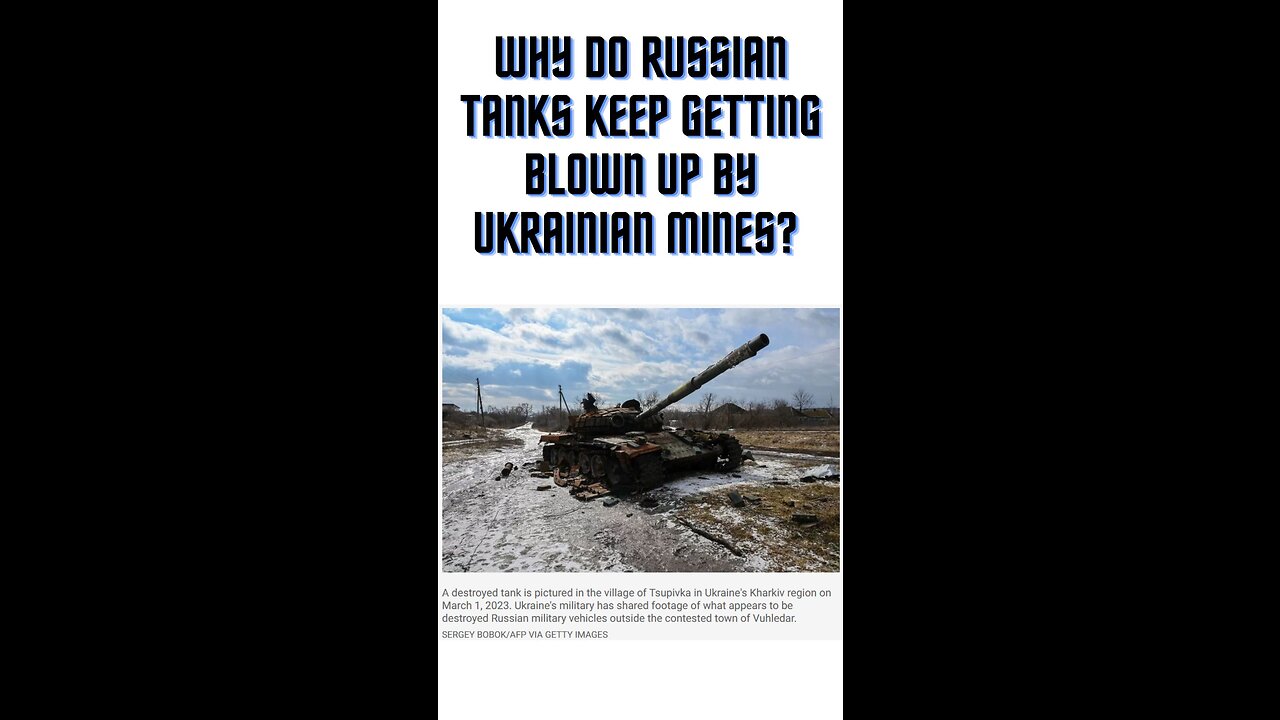Premium Only Content

Why do Russian tanks keep getting blown up by Ukrainian mines?
A minefield is not impenetrable.
So why do Russian tanks keep getting blown up by Ukrainian mines?
Mines rarely destroy tanks but do immobilize them by damaging their tracks or blowing off wheels. Given a successful push forward, the attackers can then fix the tanks in the newly captured territory. In some battlefields, Ukrainians have been planting mines close together, and the Russian de-mining operations have been ineffective, but why?
The most common anti-tank mine in Ukraine is the TM-62. It is a Soviet design that is used by both sides. It is usually triggered by a pressure fuse after it is driven over, but some have magnetic fuses. They can be buried but are more commonly just left on the ground.
The Russians use a demining tank called a KMT that is equipped with rollers to set off pressure mines. It also has a plough blade to push out buried mines. There is an electromagnetic device to trigger magnetic mines. The Russians do not seem to trust the KMTs. There have been instances, some of them documented on video, of Russian tanks blowing up because the KMT did not successfully demine an area.
If the Russians do not use the KMTs, they must resort to specialist engineer units that use mine ploughs or explosives. These engineers will clear lanes for the tanks to drive through. However, tank drivers may panic and drive out of the cleared lane only to hit a mine.
If the Ukrainians can blow up a tank on a cleared lane, the tanks behind it may try and go around and accidently hit a mine.
Russian’s inability to demine has seriously hampered its offensive war effort.
Works Cited:
https://www.economist.com/the-economist-explains/2023/04/12/why-so-many-russian-tanks-fall-prey-to-ukrainian-mines
-
 4:21
4:21
The Last Capitalist in Chicago
1 year agoWhat is the Hume-Cantillon Effect?
2521 -
 1:15:48
1:15:48
The Pascal Show
15 hours agoMUGSHOTS RELEASED! Emmanuel Haro's Parents Mugshot Released To The Public
1.7K -
 14:45
14:45
BlabberingCollector
18 hours agoKings Cross Station SET LEAKS! | Harry Potter HBO Show Update & News
1.69K -
 33:20
33:20
SB Mowing
9 days agoHealth Struggles + Endless Rain = A Yard Out of Control
10.2K18 -
 1:09:42
1:09:42
Mike Rowe
4 days agoHow Did THIS Dirty Job Make Tommy Mello A Billionaire?! | #447 | The Way I Heard It
67.9K20 -

SpartakusLIVE
10 hours agoThe BADDEST Duo in WZ Exhibits PEAK Physique || Duos w/ Sophiesnazz to start, quads later
165K1 -
 2:49:37
2:49:37
RattlesnakeTV
22 hours ago $0.29 earnedLIVE DEBATE! Lord Jake vs Crazy Feminist
27K13 -
 4:00:42
4:00:42
Badlands Media
13 hours agoThe Narrative Ep. 35: Codex of Truth
92.9K45 -
 3:55:56
3:55:56
Due Dissidence
16 hours agoSchmuley TRASHES Shapiro, Maxwell Sings For Pardon, Uhuru Doc Preview - Live From St. Louis!
48.3K46 -
 LIVE
LIVE
Lofi Girl
2 years agolofi hip hop radio 📚 - beats to relax/study to
370 watching